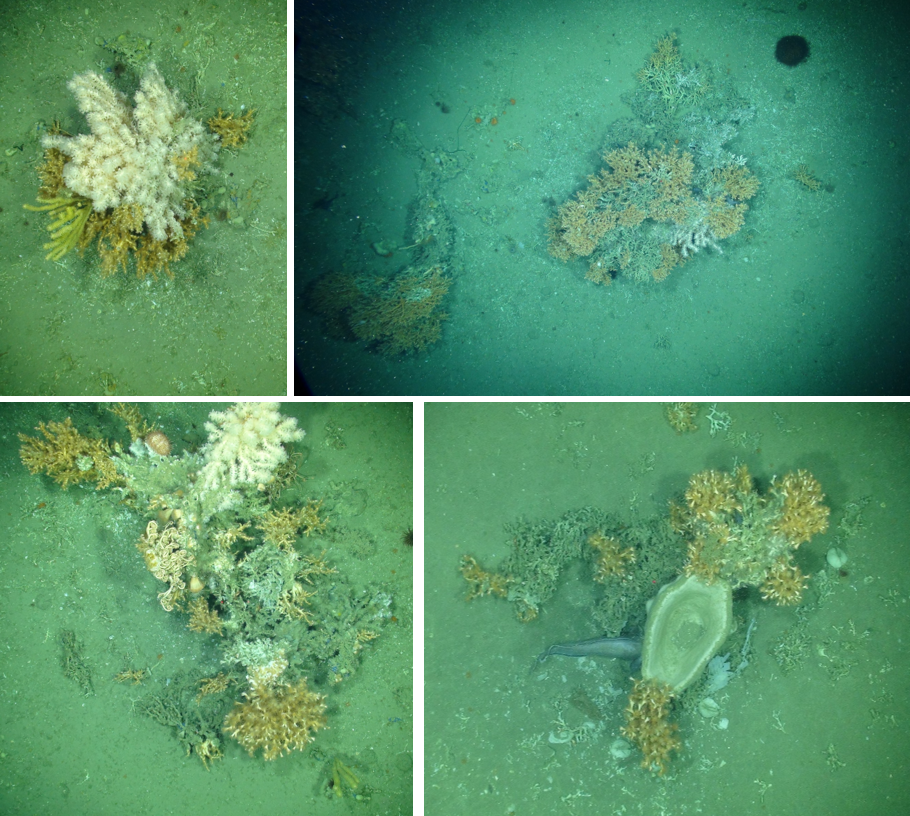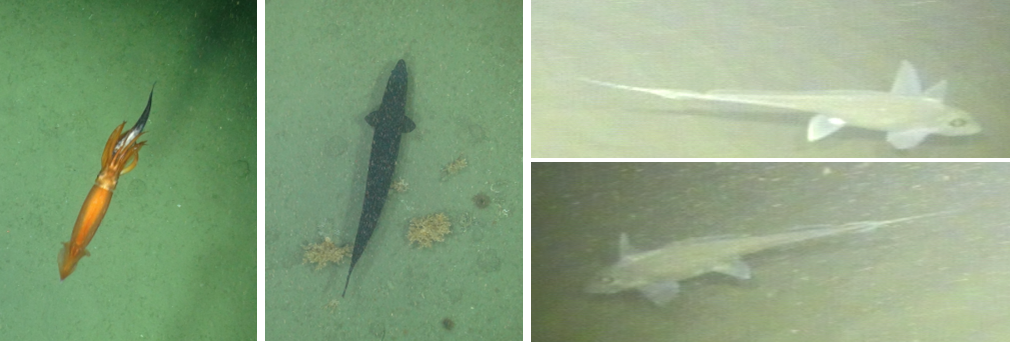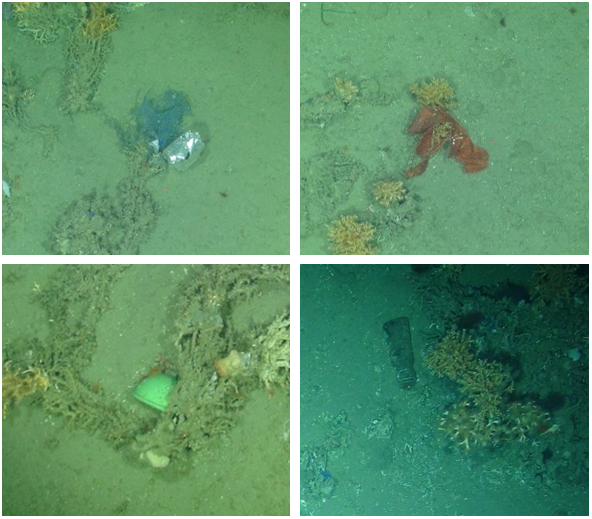As explained in the previous blog post, the Western Darwin Mounds host a more pristine ecosystem than the Eastern Darwin Mounds. Historically, less bottom-trawling activity was reported in that area before the fisheries closure was put in place.
On Tuesday 16 and Wednesday 17 September, we had two more dive with the HyBIS robot to investigate this area. The plan was to fly HyBIS following the tracks surveyed in 2011, in order to see how the ecosystem changed over the past 8 years. These missions will be useful as well for further comparison with the Eastern Darwin Mounds, damaged by the trawlers more than a decade ago.
Around 7PM, HyBIS reached the bottom of the Western Darwin Mounds to start her 8-hours journey above the seafloor. As the RRS Discovery pulled HyBIS through the deep, patches of cold-water corals were encountered on her path. It is with excitement that we were able to identify several species of soft corals associated with living colonies of hard corals such as Madrepora oculata and Lophelia pertusa. These species are responsible for the Darwin Mounds formation, as their skeletons trap sediment and over thousands of years this builds up the mounds. The species are also categorised as “ecosystem-engineers”, because they provide a structure for other species to live around.

As it was observed for the Eastern Darwin Mounds, many fishes and squids were sighted. Different weird and wonderful-looking animals were also encountered such as these enigmatic chimeras.

Some man-made litter was also found on the seabed, such as plastic bottles. Even 200 km away from land, at almost 1000 m depth, the footprint of human beings can unfortunately be detected.
While the primary target of the dive was the repeat video survey, we also recorded footage of another buoy (see post of the 12th September) deployed 8 years ago at 950 m depth. This buoy will be left at the seabed for another 5 to 8 years, to study how the community on it develops over time. At first sight, the mooring was mostly covered by barnacles, but some corals appeared to have colonised the floating structure, similarly to what we observed for the moorings previously recovered.
The following day, at 2:30AM, HyBIS was recovered on deck after a successful mission. We cannot tell yet if there is any significant difference between the observations made at the Western and at the Eastern Darwin Mounds. Back at the National Oceanography Centre in Southampton, the analysis and the interpretation of the data will tell us more accurately to what extend the fascinating cold-water corals of the Darwin Mounds are recovering from the trawling damages. More dives are planned for the coming nights, both in the Western and Eastern Darwin Mounds. We will keep you informed on our Twitter account @CLASS_UKRI when an update will be available online!
Blog written by Loic Van Audenhaege and Larissa Macedo
